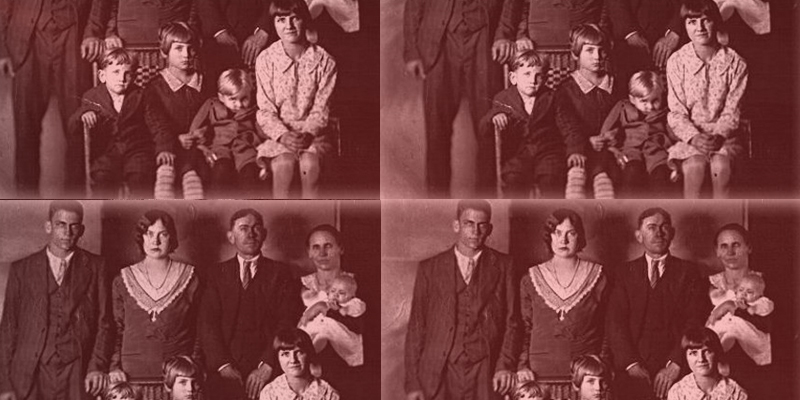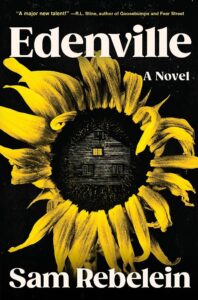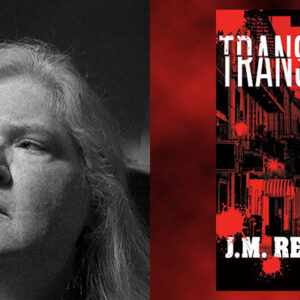A lot of my work is about the power of stories. How they shift over time and how the mythologies surrounding a single story can spiral into an entire system of beliefs, beliefs people are willing to die and kill for. I find the process of storyfication fascinating.
So I thought I’d share three true crime stories that have had an impact on my writing, not just because of the stories themselves, but because of the stories they became. Each of these crimes has generated decades’ worth of mythology, some of it so far from the truth that the actual story isn’t recognizable in its own mythos.
For example, my hometown murder:
KENDALL FRANCOIS
This is the one I knew the least about before writing this article. Ironically, it’s also the one that has haunted me the most over the years. I’ve lived in Poughkeepsie, NY, for almost twenty years, and when the found-footage horror film The Poughkeepsie Tapes (dir. John Erick Dowdle) was released in 2007, the buzz among my friends was intense. I was thirteen that fall. The Poughkeepsie Tapes was perfect fodder for my overactive teenage imagination.
The film revolves around a man who abducts and ruthlessly tortures victims in his basement, sometimes for years. He films all of it, leaving behind eight hundred tapes, never once showing his face. At the end of the film, he slips away from the police and continues gleefully torturing people in perpetuity.
The film was notoriously difficult to find. In fact, I never saw the entire thing until a decade after its release. Back in ’07, all that was available online was a grainy, cursed-looking, minute-long clip of a woman in a cellar. She has her mouth taped shut. She cries, making muffled pleas for help, as a masked man crawls slowly, silently across the floor behind her. He lifts his hand to her neck and we see the needles strapped to each finger, pressing into her skin…
This single minute of film terrified me. For years, I imagined that masked figure crawling across my bedroom floor.
But that phantom was never real. The real Poughkeepsie Killer never filmed any of his victims, and there weren’t eight hundred of them—there were eight.
Kendall Francois lived with his parents and sister within walking distance of Vassar College. He was a kind, quiet boy in high school. The other kids would bully him about his weight, calling out insults like, “How now brown cow.” It upset him, of course, but he never reacted violently. However, in the mid-90s, when Francois was in his twenties, he started hanging out with sex workers, and gained a reputation among them as a man with a temper.
In late summer 1998, Francois attempted to assault a woman in his car. She fled to a nearby gas station, notified the authorities, and the authorities used the incident to obtain a search warrant for Francois’ home. It was easy because he was already suspected in the disappearance of nine other women. Eight of their remains were discovered in his home, but the ninth (a Black woman named Michelle Eason) remains an open case.
Francois was diagnosed with HIV in 1995, which would eventually cause his death in 2014, in prison, at the age of forty-three.
I’m struck by how secular and simple this all seems, compared to the dread-inducing madness of The Poughkeepsie Tapes. Is the snuffing-out of eight innocent lives not glamorous or exciting enough for film? It was certainly sensational enough for the people of Poughkeepsie back in ’98. They gathered in tight throngs outside Francois’ home as the remains of his victims were carried out.
I suppose sensationalism is a slippery slope. The truth can be terrifyingly trite compared to the terrors we concoct for ourselves when we’re thirteen.
Which is the best segue I’m going to get into this next crime:
THE MAN WHO KILLED HALLOWEEN (aka THE ORIGINAL CANDYMAN)
I first came across this story in Killer Legends (2014, dir. Joshua Zeman), a documentary about the origins behind some of the United States’ most infamous urban legends, including the reason why we all check our Halloween candy for poison and pins. That reason is Timothy O’Bryan.
Halloween 1974, Deer Park, Texas. Ronald Clark O’Bryan, an optician, lives with his wife and two children. When his eight-year-old son Timothy gets home from trick-or-treating, he and his younger sister Elizabeth are allowed one piece of candy each. Timothy chooses a Pixy Stix that he claims tastes unusually bitter. Suddenly, he runs to the bathroom, vomiting, convulsing. He dies in Ronald’s arms, the victim of what is later identified as potassium cyanide.
Ronald is devastated. He weeps at Timothy’s funeral and readily helps the police locate the house that had allegedly been giving away Pixy Stix. The owner of that house turns out to be one Courtney Melvin, who was working at the airport on Halloween. An air-tight alibi.
Well, suspicion turned toward Ronald, of course. Turns out he had himself some debt, and had recently taken out a life insurance policy on Timothy. He’d also been asking around about how much cyanide would be needed to kill someone. So, although the source of the poison was never discovered, Ronald was tried and convicted for the murder of his own son.
He maintained his innocence throughout the trial and right up until his death, clinging to the old urban legend about a rogue maniac dispensing tainted Halloween candy. The thing is, that urban legend has never really been true. O’Bryan only stoked the fire by adding to a decades-long series of bad coincidences and stories like Helen Pfeil’s.
In 1964, 47-year-old housewife Helen Pfeil thought the teens coming to her door were too old to be out trick-or-treating. So she handed them all goodie bags filled with clearly-labeled ant poison, steel wool, and dog treats. It was a joke, she told them it was a joke. But that didn’t stop the ire of her fellow parents. According to a New York Times article from ’64, Pfeil’s husband called her actions “‘thoughtless’ but not ‘malicious.’”
Even after O’Bryan’s death, cases like this continued to unfold. For example: In 1990, seven-year-old Ariel Katz collapses on Halloween night, inciting an exhaustive door-to-door search for the sadistic culprit, before it’s revealed that Katz had congenital heart failure.
There are rare cases of foreign objects appearing in candy, but according to Joel Best, professor of sociology and criminal justice at the University of Delaware, “The idea that this is a big social problem is a myth. I can’t tell you that no one’s ever contaminated a piece of candy. But I can’t find any evidence that anybody has ever been hurt, seriously hurt, or killed from a contaminated treat.”
It’s fascinating that the myth remains more well-publicized than the facts. Mass beliefs are easy to birth, and almost impossible to kill. Anger carries far.
On March 31, 1984, hundreds of people gathered outside the prison in Huntsville, Texas, while O’Bryan’s lethal injection was carried out. They carried signs and yelled things like, “Trick or treat!”
Several years ago, I wrote a play inspired by O’Bryan’s case. It revolved around a woman struggling with an addiction to cocaine, who accidentally overdoses her own son. Looking back, there are two details about this fiction that surprise me. One: The son is an only child. I can’t imagine what it must have been like for Elizabeth O’Bryan when her older brother died. No child undergoes that particular horror in my play. Secondly, the murder itself is an accident, unlike Timothy O’Bryan’s murder.
How did it happen that my story unintentionally adapted the truth into something relatively light? What did I need in my retelling that drove me to make that choice?
I’m not sure. But the same thing happened with this final case:
CHARLIE LAWSON
I first heard of the Lawsons on My Favorite Murder back in 2018 (Episode 142, “Live at the Durham Performing Arts Center”). I listened to a lot of MFM back then. Karen Kilgariff and Georgia Hardstark were my only company during my soul-numbing day job scanning files in a cubicle. When Karen shared the Lawson story on the show, it changed everything for me. It was the seed of what would become my debut novel, Edenville.
In 1929, Charlie Lawson was a tobacco farmer in Germantown, North Carolina. He was a strict father to his seven children, beating them regularly and refusing to buy them Christmas presents because they didn’t “need” them. But his behavior worsened when he accidentally whacked himself in the head with a pickaxe. Months later, he took the entire family into town, bought them unusually nice clothes, had them pose for a family portrait. And on Christmas morning 1929, Charlie Lawson killed his entire family, except his oldest son Arthur. He shot them, bludgeoned them to be sure they were dead, and for some reason, posed some of them with rocks under their heads, as if they were sleeping. He arranged his daughters’ bodies neatly in the barn, then went into the house to finish off everyone else before shooting himself back outside.
Was it the head injury? Was he in debt? Had he secretly impregnated his own daughter? Rumors have run rampant for nearly a century now, but we’ll never know for sure why Charlie did it.
The detail that fascinates me most about this case is the blood. It was so cold the day the Lawsons were murdered that their blood froze onto the floor of the house. The men who cleaned up the scene afterward had to crack this crimson ice apart with hammers. They buried it all in the backyard, allowing the pain and horror of this tragedy to soak into the earth. Then they opened the Lawson house to the public, so people could come in (for twenty-five cents a head) and see the house exactly as it had been the day everyone in it died. People took things from the house, most notably the raisins from the cake Fanny Lawson had been making for Christmas. Who knows where those raisins ended up.
The Lawson home remained standing until it collapsed in the 1970s. Then wood from the house and its adjoining barn was converted into a bridge on nearby Payne Road (also known as Edwards Road). Before it, too, was taken down, that bridge was allegedly haunted, home to phantom screams, crying, handprints on car windows, etc.
I just wonder where it all went. Did all of the wood go into that bridge? Or is some of it elsewhere, haunting things we don’t even know about?
Relistening to Karen Kilgariff tell this story, I’m surprised how many of these details made it into my version of the Lawsons in Edenville, and how much lighter my story seems compared to the truth. I had to add kids in later drafts, because my version of Charlie Lawson had only three, not seven. My story has haunted wood, stolen pieces of macabre memorabilia, and cursed bloodland. Karen even makes the exact joke that inspired Edenville, a joke I’d internalized so deeply I’d completely forgotten about it. From the bloodied backyard, she says, “a black rose bush grew. That’s the horror movie. That’s when we fictionalize.”
*
Except it seems to me like we’re fictionalizing all the time, even when we don’t mean to be. All the time, we sensationalize and warp stories like these to match our own needs and fears. That’s why I find these cases so fascinating. Not because of what they are, but what they grow. What grows out of all that blood, how do we twist it for our own use, and why?
Killer Legends shares with us archival footage of Ronald Clark O’Bryan in prison. Dead eyes behind thick glasses, he stares at his interviewer as the man tells him, bitterly, “You are accused of ruining Halloween for everybody.”
“Well,” O’Bryan smirks, “that’s a matter of opinion.”
***


















